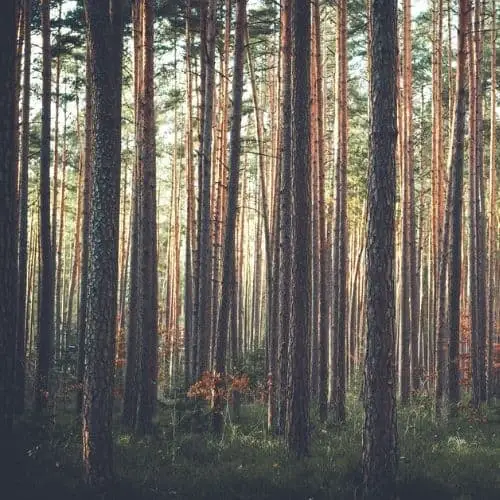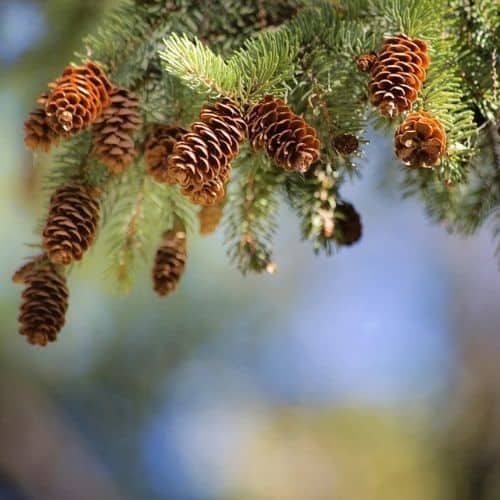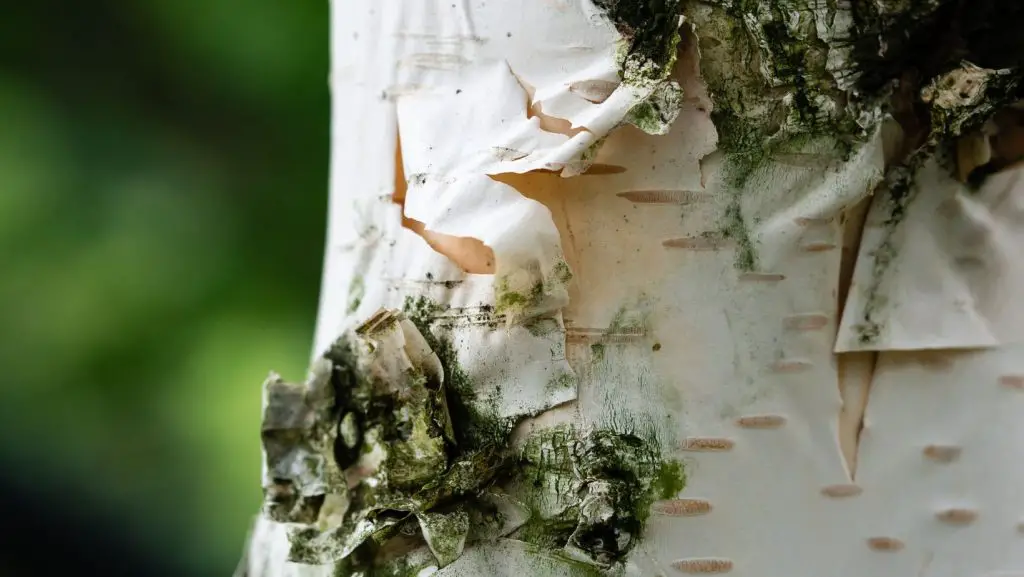
When you think about bark, you probably think of the thick, rough layer that is wrapped around the trunks of trees. Most trees have rough barks. Some trees may have smooth barks when they are young but their barks grow to become rough over the years.
However, there are some trees that have smooth barks throughout their lifespan. This is common amongst trees that are native to environments with damp weather conditions. These trees require bark that shed regularly as they are susceptible to lichen, moss, fungal infections, parasites, and the likes. Are you curious about trees with smooth bark? Well, this article is going to introduce you to some of the finest trees with the smoothest barks!
Not many trees have smooth bark, but to name a few, the most common trees with smooth bark would be: Birch, Aspen, Beech, Plane, Desert Ironwood, and Eucalyptus trees.
Birch Trees
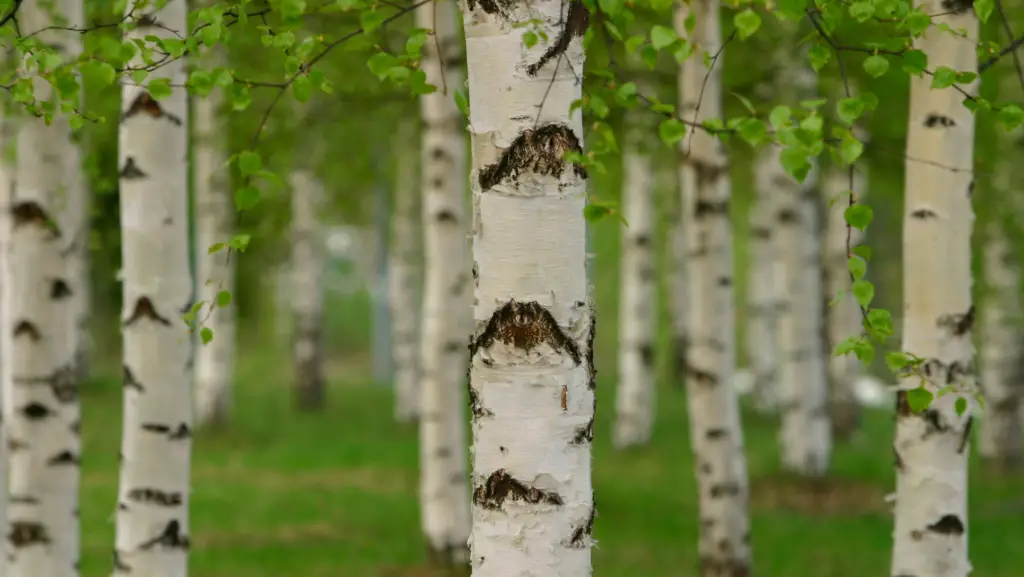
Birch trees are deciduous trees that belong to the Betula genus in the Betulaceae family. Birch trees are generally between 40 to 70 feet (12 to 21 meters) tall and can have canopies that span 35 to 60 feet (10 to 18 meters). There are around 40 species of Birch.
Birch trees are native to temperate climates across the northernmost part of North America. While there may be differences in the appearances of different species of birch, there are a few unique features that you can identify or recognize birch trees.
The bark of a birch tree is smooth and light-colored. It can have whitish, yellowish, greyish, and even slightly reddish hues. Another interesting factor about birch tree barks is that most of them bear dark horizontal streaks which are referred to as ‘lenticels’. (Lenticels facilitate gas exchange between the internal tissues of the tree and the external environment.)
The bark of the birch tree is renowned for its paper-like texture that naturally peels to shed the moss, lichen, and fungus that grows on it.
Aside from its distinctive bark, you can also recognize a birch tree by its leaves. The leaves of a birch tree are either triangular or oval with a round base, pointed tips, and serrated margins. Most birch trees have leaves that are alternately arranged on their branches. During the autumn season, the leaves turn into bright shades of yellow, orange, and red.
The flowers of a birch tree are referred to as ‘catkins’. Catkins are flower clusters that are cylindrical in shape. They bloom in the spring season as the leaves begin to reappear. Catkins are generally pollinated by the wind although there are instances in which they are pollinated by insects.
Aspen Trees
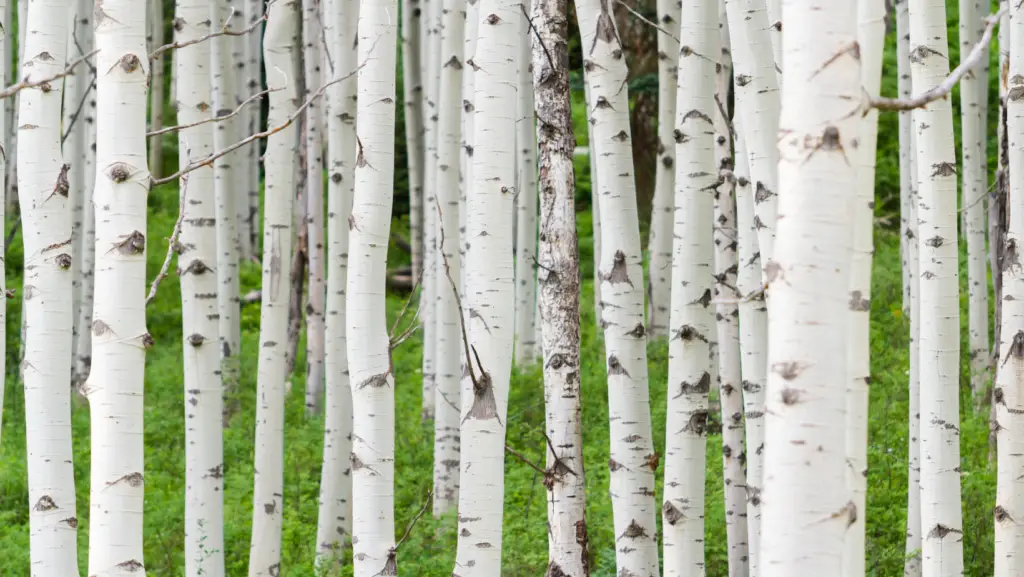
Aspen trees are flowering trees that belong to the Populus genus. Aspen trees are generally between 20 to 80 feet (6 to 24 meters) tall and 20 to 30 feet (6 to 9 meters) wide. Aspen trees are native to regions with cold climates in the northern hemisphere.
Aspens trees have long, slender trunks with straight statures. The barks of aspen trees are smooth and have a greenish-white or yellowish-white hue when they are mature and then proceed to take on a silvery-white hue as they continue to grow. Interesting enough, the greenish hue is from chlorophyll that is present in the bark; this means that the bark of the Aspen tree is photosynthetic. Another interesting note about the aspen bark is that it is a source of food for several insects and animals from butterflies to moose.
Aspen trees have a similar outward appearance to birch trees. However, you can recognize one from the other by their distinguished bark textures and leaves. The bark of the aspen tree gradually becomes rough and fissured as the tree grows older. The bark also does not peel easily like the bark of the birch tree. Furthermore, Aspen trees have flat leaves with a pointed tip and are rounder and shorter than birch leaves.
A unique feature of the aspen tree is its seeds. The flowers and seeds of the tree grow on catkins. The seeds of the aspen tree appear as small tufts of soft cotton wool which are released into the air when the pods split open.
Fun fact: there is a type of aspen tree called the ‘quaking aspen’ or ‘trembling aspen’. This tree earned its name from the vigorous, audible shaking of its leaves whenever a breeze blows through!
Beech Trees
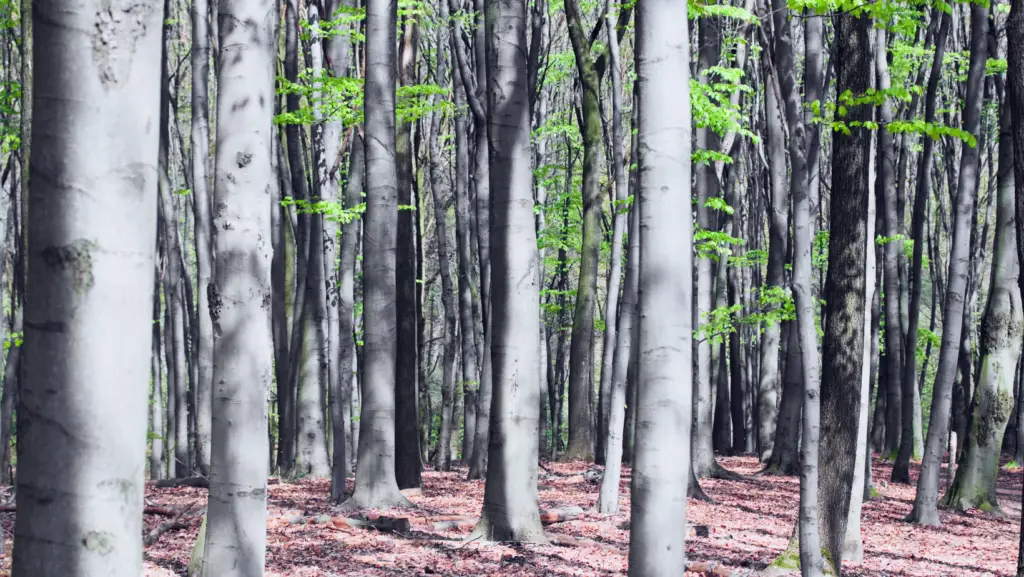
Beech trees are deciduous trees that belong to the Fagus genus in the Fagaceae family. They can grow between 40 to 70 feet (12 to 21 meters) tall and their crown can spread 40 feet (12 meters) in length. Beech trees are native to temperate regions in North America, Europe, and Asia.
Beech trees have a smooth bark that is light gray in color. Other than identifying its distinct shape and bark, you can also recognize a beech tree by its leaves. The leaves of beach trees are arranged alternately on branches. They take on an elliptical shape, have toothed leaf margins and straight, parallel veins. Each leaf vein has a pointed tip.
The American beech tree is susceptible to beech bark disease. This disease occurs when the beech scale insects feed on the outer bark of the beech tree. While this action does not immediately result in the death of the tree, it reduces the beech tree’s natural resistance to fungal infections and insect attacks. The bark can then get infected with the faginata fungus unique to the American beech tree.
In short, the fungus penetrates the layers of the bark and can eventually kill the inner bark and cambium layer. You can recognize a beech tree infected with this disease by large canker sores that appear on its bark.
Plane Trees
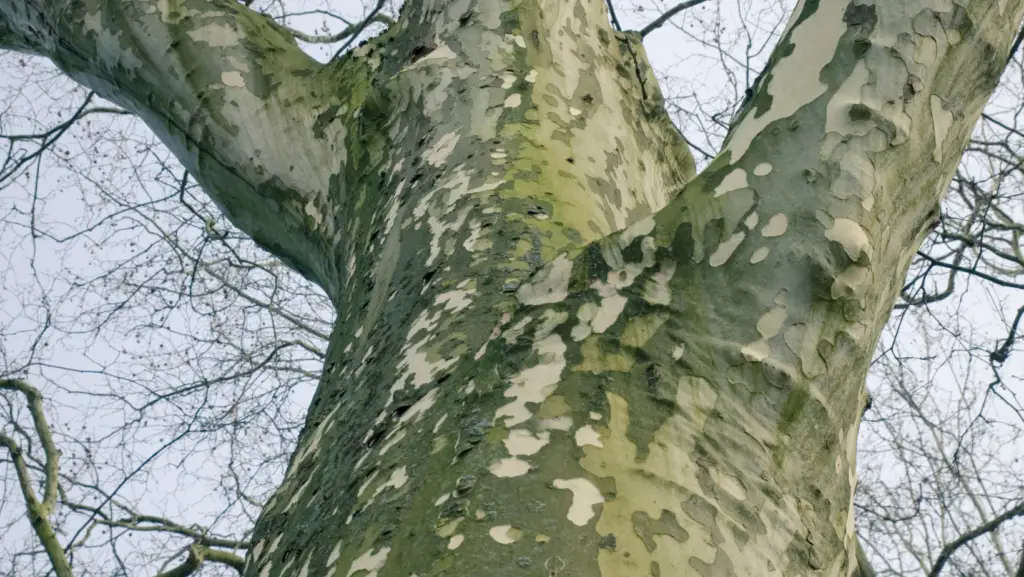
Plane trees belong to the Platanus genus and are the only remaining trees of the Platanacaea family. If you are not too familiar with the term ‘plane tree’ then you may be familiar with its’ different species such as the American sycamore, Western sycamore, London plane, and Oriental plane. These trees can grow to great heights with many of them being between 98 to 164 feet (30 to 50 meters) tall. Plane trees are native to North America, Eastern Europe, and parts of Asia.
Plane tree barks have a very distinguished appearance. Not only is the bark smooth but it peels off in patches to expose the layers underneath. The bark has a ‘camouflage’ impression when it is peeling with its patches of white, gray, brown, and tan colors. This is the most distinct and easily recognizable feature of Plane trees, particularly the American sycamore tree.
Plane trees are fast-growing and can increase in height by several feet a year. This is one of the main contributing factors to the peeling of the bark as the tree expands and the layers of the bark thicken. Continuous growth pushes the bark outwards and results in the cracking of the outer layers which then peels off.
The leaves of plane trees have a distinct appearance as they are palmate and lobed; they may be either three-lobed or five-lobed. The leaves have toothed edges along the margins and prominent veins on the lobes. The American sycamore can be easily recognized by its unique seed balls. It produces brown, ball-shaped clusters of seeds that dangle on branches after leaves have been shed during the autumn season. These seed balls drop in spring when the leaves begin to reappear.
Eucalyptus Trees
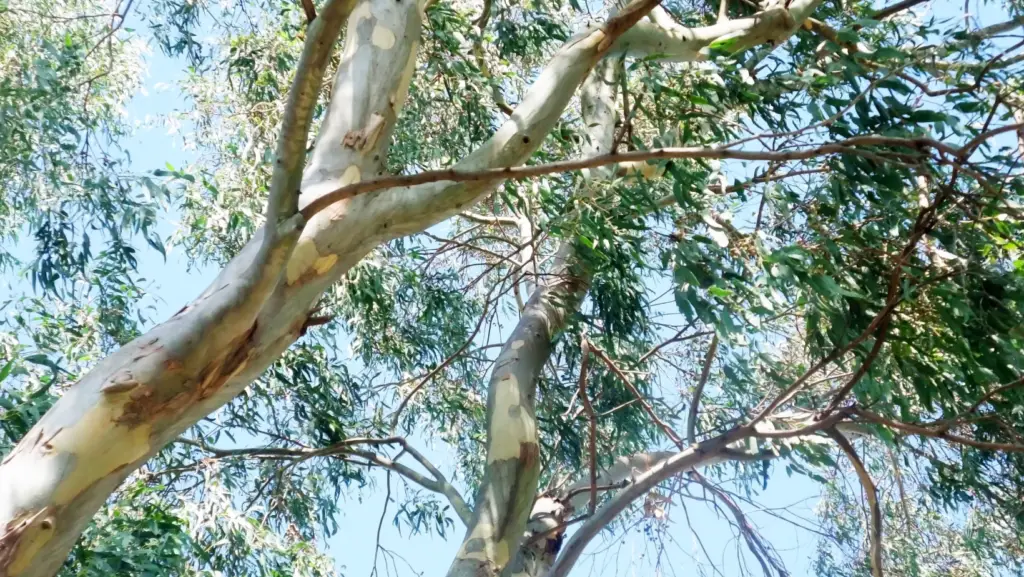
Eucalyptus trees belong to species of flowering trees and shrubs that are mostly native to Australia. The different species of eucalyptus trees have varying heights with the shorter ones growing up to 33 feet (10 meters) and the taller ones growing up to over 200 feet (60 meters). As eucalyptus trees have such diverse natures, it is only a select few of them that have smooth barks such as the ghost gum tree, the spinning gum tree, the brittle gum tree, and the white gum tree.
The aforementioned species of eucalyptus trees earned their names because of the gum that oozes from their barks. These four species have beautiful bone-white barks that almost always have striking contrast to their green and brown natural backgrounds.
All species of eucalyptus trees shed their barks on an annual basis. Amongst species with smooth barks such as the ones mentioned earlier, the bark peels off in long strips of flaky curls.
The main reason why eucalyptus trees shed their barks is to relieve themselves of the growth of moss, lichen, fungi, and parasites on the outer bark. The peeling bark of some species of eucalyptus trees has the ability to facilitate photosynthesis.
Eucalyptus trees are otherwise recognized by the shape of their leaves. If you love koala bears, you may be very familiar with the leaves they are always munching on!
Most eucalyptus leaves are evergreen, have a lanceolate shape and a rather glossy look. The renowned eucalyptus leaves are commonly from the Tasmanian blue gum tree. Eucalyptus leaves are beautiful in appearance and thus, are commonly used in foliage and dry flower arrangements. However, the most distinct feature of eucalyptus leaves is the aromatic scent of eucalyptus oil. The scent is described as minty pine with a trace of honey.
Interesting fact: eucalyptus trees are rather flammable. When the eucalyptus oil within the trees heats up, the tree emits a flammable gas which then ignites a fire. Ignited trees are even known to explode!
Desert Ironwood Trees
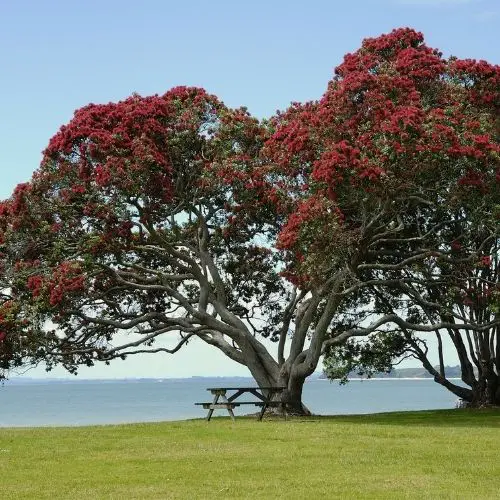
The desert ironwood tree is a flowering tree that belongs to the Fabaceae family. It is drought-deciduous, meaning it sheds its leaves in the dry period of winter to conserve water.
This tree is uniquely native to the Sonoran desert and is believed to be one of the oldest plants with some trees living up to 1,500 years. Desert ironwood trees can grow up to 45 feet (14 meters) in height. The desert ironwood earns its name from the extremely high density of its wood; this wood is among the heaviest woods in the world.
The bark of the desert ironwood tree is gray, smooth, and even shiny. The bark gradually develops fissures as the tree grows older but as is apparent, this tree takes a very, very long time to grow!
The leaves of this tree are elliptical and paired while clusters of beautiful purple-and-white flowers on short shoots protrude from the middle of the stem.
While the tree produces flowers and fruit most years, they are observed to be especially abundant for an average of four years per decade.
The desert ironwood is very easy to recognize in the desert, especially when it is flowering. This tree bursts into a colorful display of white and purple against the dry and arid desert backdrop. Even when it is not blooming, you can easily identify this tree by its grayish-brown smooth bark that is often shiny enough to reflect the desert sun.
The desert ironwood also considered being a ‘nurse plant’ as it provides protection from the sun and frost to cacti and other plants that grow under its shade. It also offers forage and acts as a nesting site for animals.
Conclusion
Isn’t it fascinating how all these different species of trees are characterized by their smooth barks yet have so many other distinguished differences between them? Nature is truly amazing! We hope that this article was a fun and interesting read for you. We also hope that you were able to learn something new from it. The next time you see a tree with smooth bark, try and see if you can recognize what type of tree it is!
Recommended reading:

Hi!
I am the guy behind Theyardable.com. I grew up on a homestead and I am here to share the knowledge I have and things I learn while living in the countryside.

